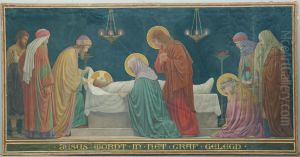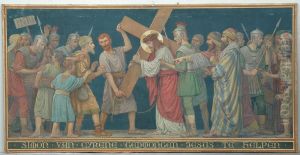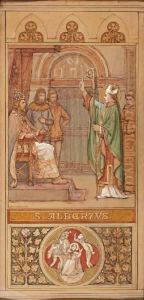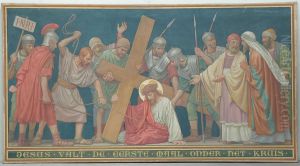Jan Dunselman Paintings
Jan Dunselman, born in 1863 in Den Helder, Netherlands, was a distinguished Dutch artist known for his contributions to painting and stained-glass design. His work is particularly noted for its intricate detail, vibrant colors, and the ability to convey deep religious and historical narratives. Dunselman's artistic journey was deeply influenced by his upbringing in a culturally rich environment and his education, which played a pivotal role in shaping his artistic perspectives and techniques.
Dunselman's career was marked by a profound engagement with religious themes, a reflection of the Catholic revival in the arts during his time. He was particularly adept at creating religious art that was not only beautiful but also resonated deeply with the spiritual sentiments of his audience. This capability made him a sought-after artist for church commissions, where his paintings and stained-glass works served to enhance the spiritual ambiance of sacred spaces. His contributions to church interiors across the Netherlands are a testament to his skill and sensitivity as an artist.
Beyond his religious works, Dunselman was also recognized for his historical paintings. His keen interest in the past, combined with his artistic talent, allowed him to produce works that captured the essence of historical narratives with accuracy and emotional depth. These paintings often served as a visual bridge to the past, enabling contemporary viewers to connect with historical events and figures in a profound way.
Jan Dunselman's legacy is not only preserved in the beauty and depth of his artworks but also in his contribution to the revival and enhancement of religious and historical art in the Netherlands. His death in 1931 marked the end of a career that had significantly impacted Dutch art, leaving behind a body of work that continues to inspire and move viewers with its beauty and depth of expression.



